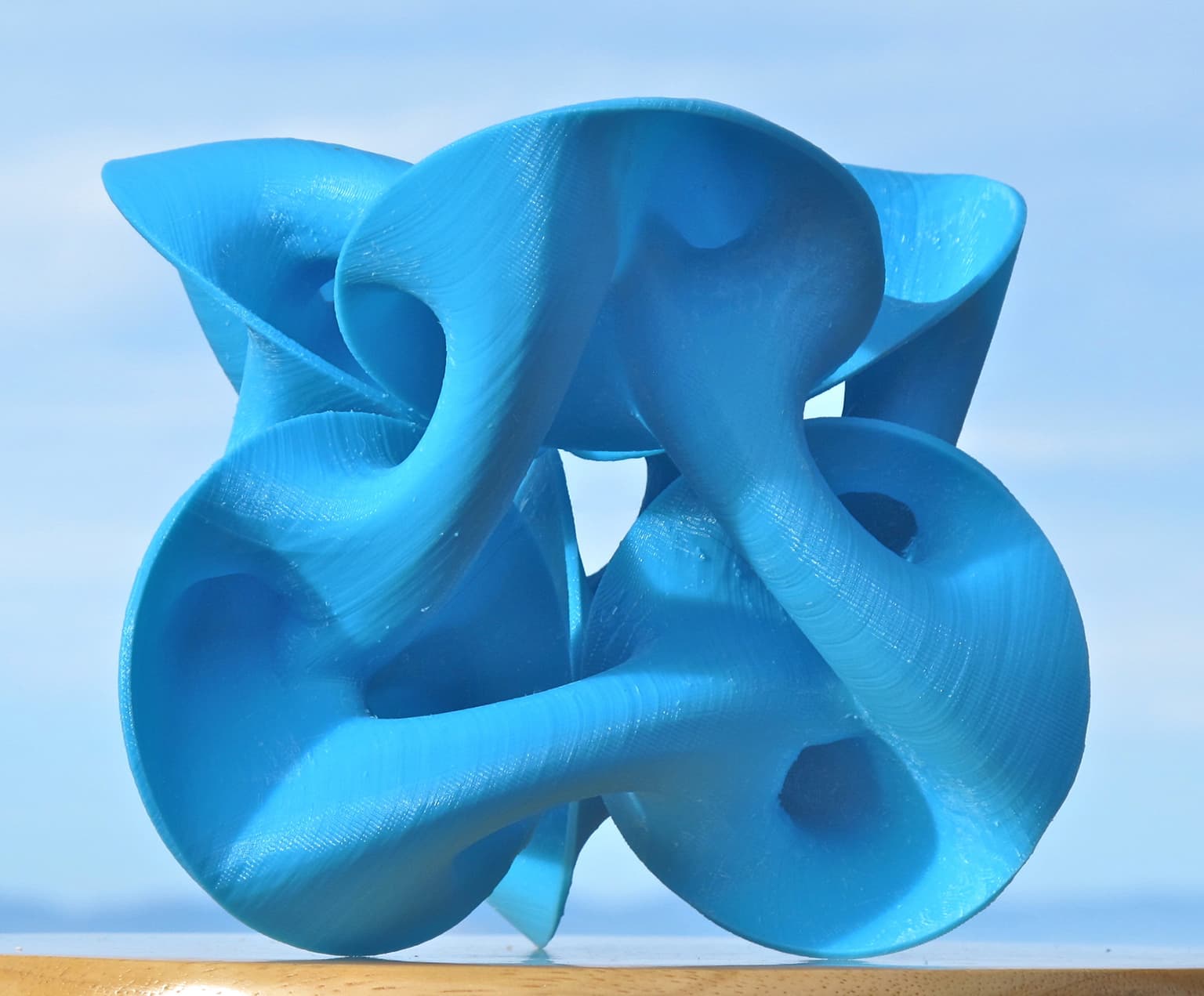2018 Joint Mathematics Meetings
Carlo Sequin
Artists
Carlo H. Séquin
Prof. Emeritus
EECS Department, University of California, Berkeley
Berkeley, California, USA
Statement
For several years, I have admired the ceramic creations and metal sculptures by Eva Hild. They not only enchant me with their free-flowing organic beauty; they also intrigue the mathematical part of my mind. How many tunnels and border curves are there? What might be their genus. For a topologist, many of Hild’s surfaces represent challenging exercises in surface classification. Analyzing many images of her sculptures, I was surprised that I could not find any single-sided ones; they are all orientable! Would a non-orientable surface look quite different and stand out from her portfolio? Here I present two models of single-sided 2-manifold sculptures that use some of the geometrical elements found in Eva Hild’s creations.
Artworks

Tetra-Cluster of Seven Klein-Bottles
15 x 15 x 15 cm
3D-print, PLA plastic
2017

Dodecahedral-Cluster of 25 Klein-Bottles
24 x 24 x 24 cm
3D-print, PLA plastic
2017